Contents
Romosa carrots are a hybrid of Dutch selection, intended for industrial and private cultivation. The variety is productive, cold-resistant, with high immunity to infections. Undemanding in care, characterized by stable fruiting. It has a rich chemical composition and good taste.
History of breeding
Romosa carrots are created on the basis of the Dutch agricultural company Bejo Zaden BV, the world’s leading company in the production and distribution of agricultural vegetable seeds. Due to its characteristics, cold resistance and unpretentiousness in care, Romosa carrots are listed in the State Register with a recommendation for cultivation in the Far East, Central region and the Middle lane.
Description of the Romosa carrot variety
The hybrid belongs to the variety type Berlikumer, characterized by productivity, disease resistance, high nutritional value and good taste.
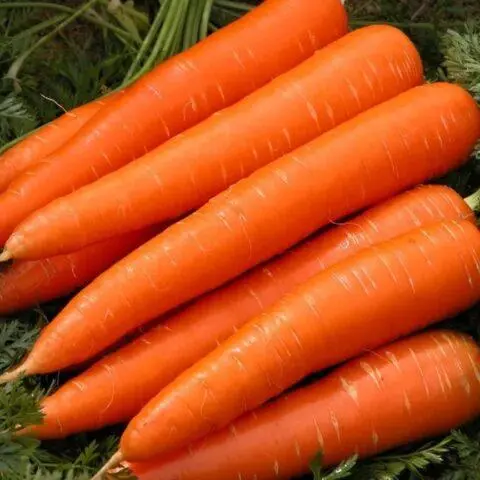
Romosa carrots produce large cylindrical roots, slightly pointed at the bottom.
Biological features:
- The surface is smooth, with white short vertical strokes, with residual thin root shoots.
- The color is bright orange, in the transverse section, the thickness of the bark significantly exceeds the core, there is no particular difference in the color of the parts.
- The size of carrots on one bed is aligned, length – 25 cm, diameter – 4 cm.
- Weight – 200 g.
- Taste with a predominance of sugars, carrots are juicy, without hard fibers.
Carrots are processed into juice, used in culinary recipes for salads, stews, and consumed fresh.
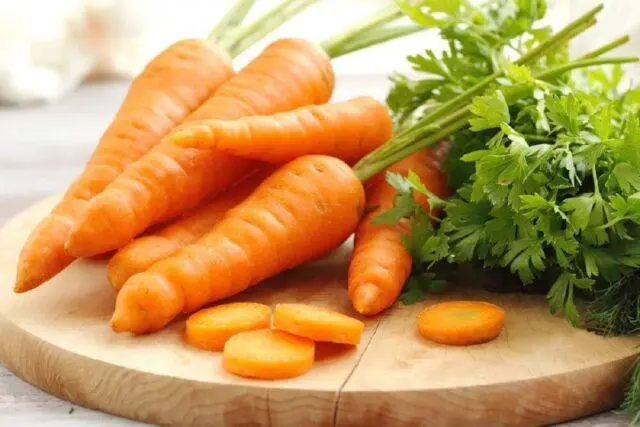
The variety Romosa has a long shelf life (within eight months)
Characteristics of Romosa carrots
The hybrid, like all varieties of culture, is characterized by a two-year vegetation cycle. The plant is grown as an annual. Carrots produce seeds, but they are not suitable for cultivation. Seed material has low germination, does not retain varietal characteristics.
Romosa is a cold-resistant hybrid that begins to grow at a temperature of + 3-40 C. Seedlings tolerate -4 without damage0 C. But the variety is demanding on the light regime. The crop reaches its optimum yield in an open area. It does not tolerate even periodic shading.
Ripening period
Romosa is a mid-season variety that is suitable for early spring and late winter sowing. From the moment of formation of the root crop to the biological ripeness of carrots, four months pass. Harvesting is carried out after the onset of autumn frosts, approximately in late September or early October. The timing depends on the climate in the region.
Romosa carrot yield
You can get a good harvest only if certain requirements are met. In favorable conditions from 1m2 collect up to 6,5 kg of Romosa carrots, on production fields – 470 centners per 1 ha.

The variety is considered to be high-yielding
Disease and pest resistance
If the carrots have enough light and the soil is not waterlogged, Romosa practically does not get sick. The hybrid has genetic immunity to a number of infections dangerous for the culture:
- root beetle;
- fomozu;
- sclerotiniosis;
- cercosporosis;
- botrytiosis.
If plant residues remain on the site, and the season is wet and warm, then infection with Alternariosis (black rot) is possible. Therefore, the Romosa carrot variety is not recommended for subtropical climates.
Of the pests, the hybrid is not harmed by all types of aphids, cruciferous fleas. On the beds with the culture, only the carrot fly parasitizes.
Landing regions
Favorable climatic conditions for the growth of Romosa carrots: temperature not higher than +26 0C, minimum seasonal rainfall. A high yield is possible only in the following regions:
- Far Eastern;
- Central;
- Volga-Vyatka;
- Ural;
- Nizhnevolzhsky.
Good productivity of the variety is noted in the Moscow region and the Penza region.
Advantages and disadvantages
Gardeners appreciated Romos carrots. Culture is characterized by a number of positive qualities. The root contains 8,2% sugars, which provides carrots with a sweet taste.

Romosa carrots have strong immunity and are suitable for commercial cultivation.
Pros:
- good taste and juiciness;
- stable yield;
- resistance to cracking;
- transportability;
- long shelf life;
- standard agricultural practices;
- attractive trade dress.
There are no significant shortcomings in the variety. The only negative is that in the rainy season, carrots need preventive treatment from a fungal infection.
Growing tips
For the Romosa variety, a sunny area with light, humus-enriched soil is chosen. Sowing seeds is carried out in early spring, when the soil warms up to +3 0C.
Planting carrots:
- The bed is dug up, organic matter and mineral fertilizers are applied.
- Level the surface.
- Grooves are made to a depth of 2 cm, an interval of 25 cm is maintained between them.
- The seeds are laid out, fall asleep, watered with Energen’s solution.
Planting material germinates in about two weeks. All this time, the soil is abundantly moistened with warm water.
Agrotechnics carrots Romosa:
- Row spacing is loosened after 3-5 waterings. Along the way, weeds are removed.
- After the formation of the third full-fledged sheet, the planting is thinned out with an interval of 4-5 cm.
- Water regularly so that the soil does not dry out. Overwatering is unacceptable.
- They are fed at the end of May with Bud, in mid-June with Agricola Vegeta, after 15 days they are fertilized with Effekton-O.
Fresh manure is not recommended, because carrots can grow deformed.
Pest and disease control
Romosa hybrid is harmed by carrot fly larvae, they gnaw through passages on the surface of the root crop and reach the core.
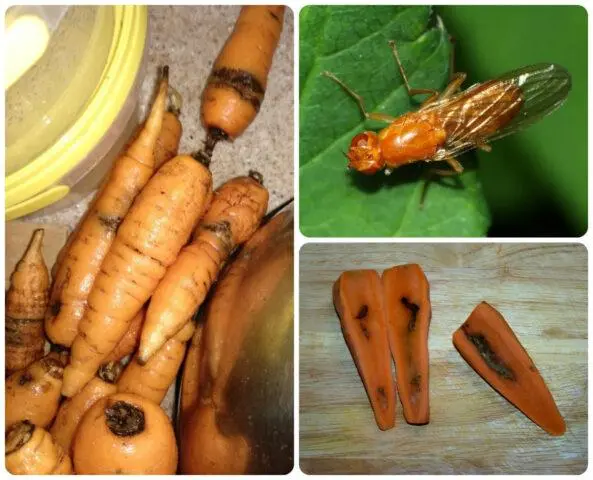
Damaged fruits can be detected by black areas, an unpleasant odor
In order to prevent the spread of pests, the aisles are regularly loosened, weeds are removed, and watering is optimized, eliminating moisture stagnation. To scare away an adult, garlic or mustard is planted near the beds. In the second half of May, Iskra DE carrots are processed.
With high humidity of air and soil in hot weather, the Romosa variety suffers from Alternaria. The spores of the fungus spread intensively on weeds and their residues.
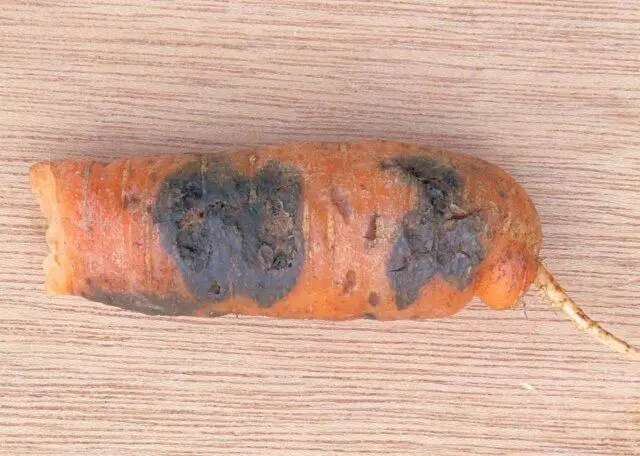
Black rot develops in the second half of summer on the leaves, then affects the root
Tops (10-15 cm) are treated with “Khom”. In mid-July, near the carrots, the Barrier preparation is sprinkled.
Harvesting and storage of crops
The soil during the harvesting of Romos should be dry or moderately moist. Root crops are dug up, pulled out by the tops. The remains of the soil are removed by hand, without shaking off or hitting the ground. The leaves are cut, the roots are sorted. Small and damaged copies are not stored. So that the carrots do not lose moisture, the crop is transferred from the site under a canopy. Store in a dark room at a temperature not exceeding +40 C and air humidity 90-95%.
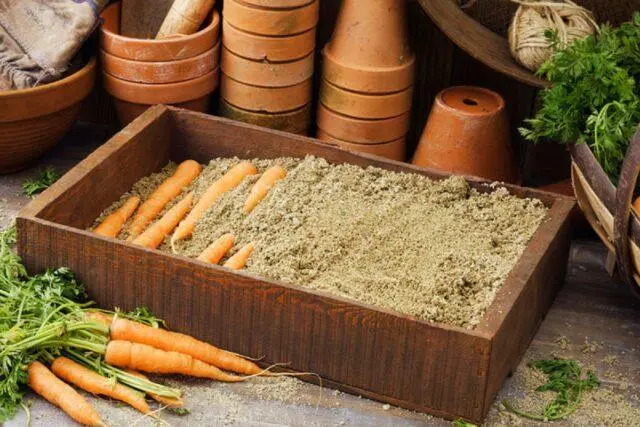
Root crops are placed in boxes in layers, sprinkled with dry sand
Conclusion
Romosa carrots are an ideal variety for growing in temperate climates. The hybrid is not afraid of sub-zero temperatures; it can be sown in early spring or before winter. The crop is productive, with a high rate of marketable output. The taste is sweet, the structure of the root crop is juicy, tender. The Romosa variety retains its nutritional value and appearance for a long time.









